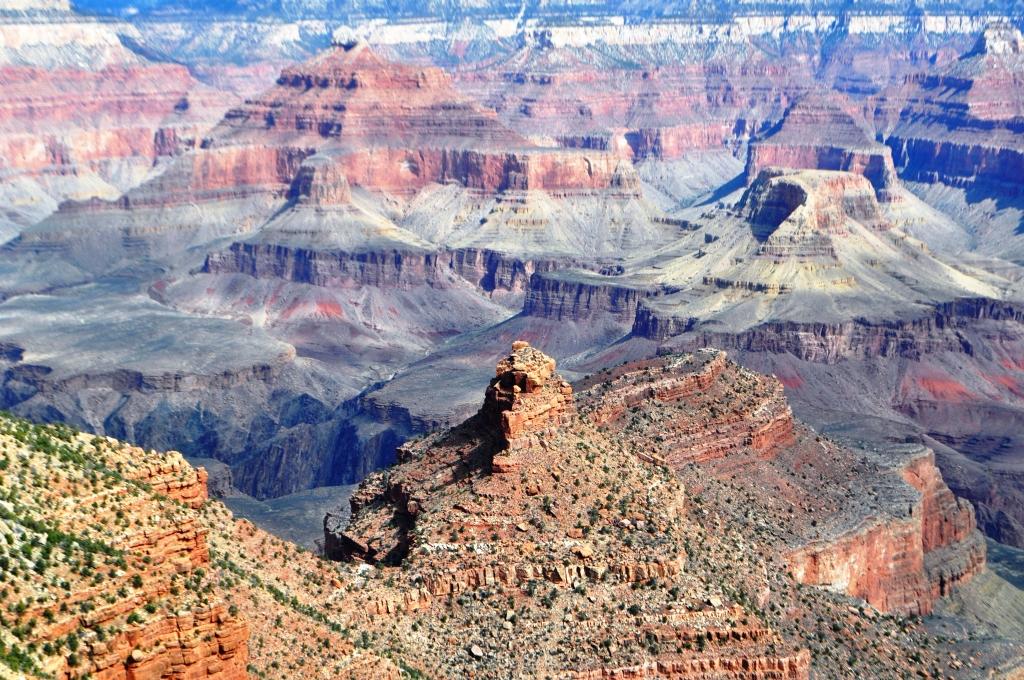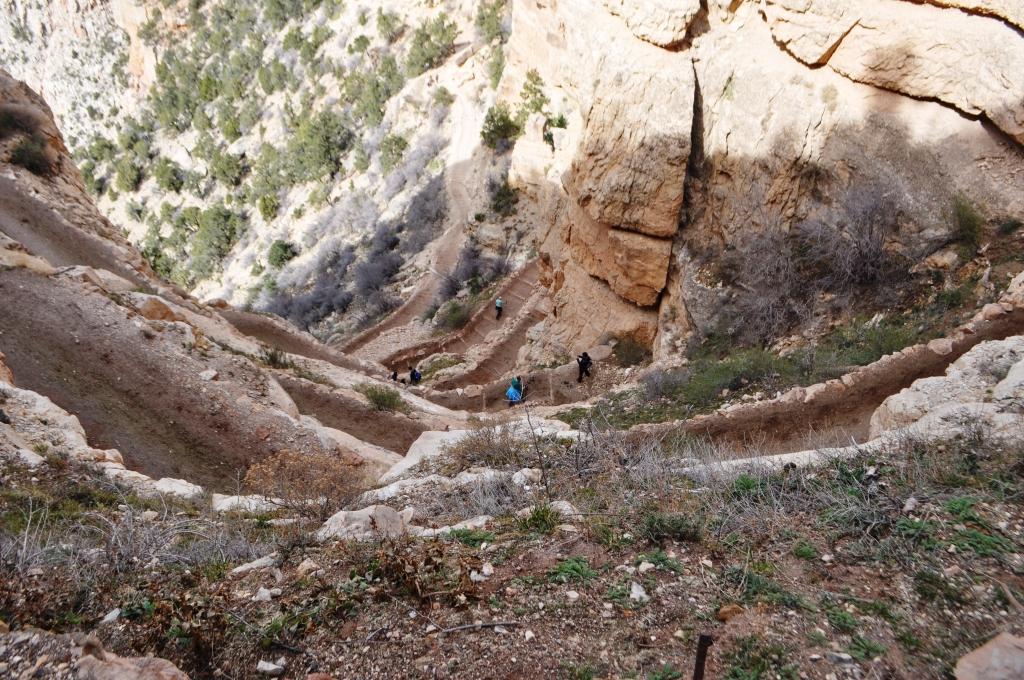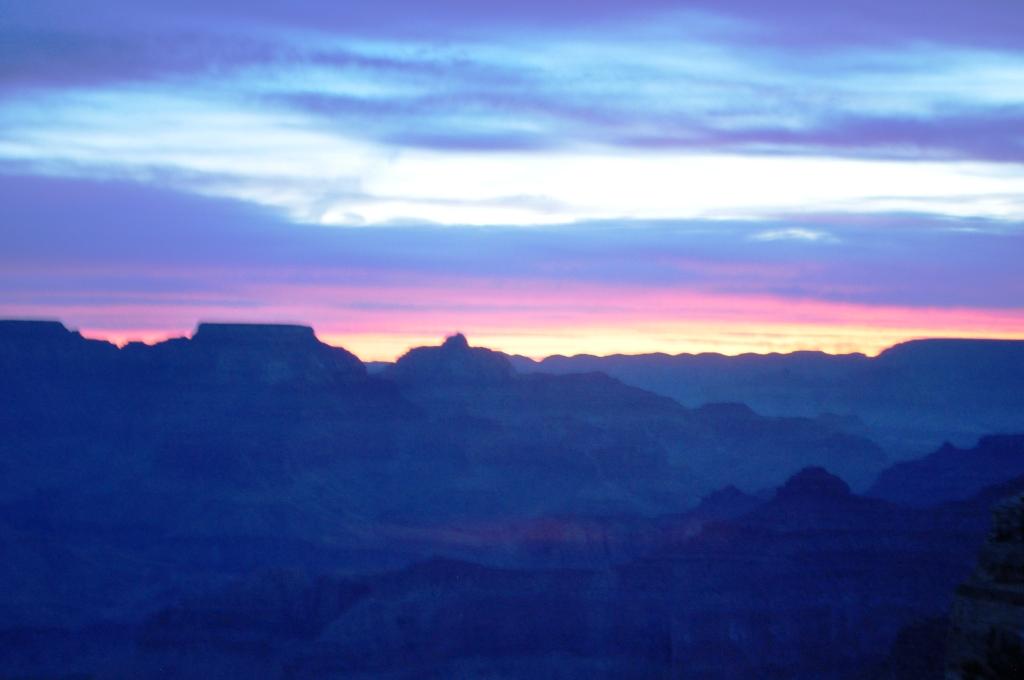
There is, quite simply, nothing else like it on earth. And even though we think we know the canyon — from television specials, calendars, and movies like Thelma and Louise — hiking into it is a whole different level of experience. Astonishingly, most visitors say on the Rim, content to take photos without venturing more than a few minutes from their cars. But a whole new world awaits those who step off the edge, and start going downhill.
But first, a warning: Grand Canyon National Park’s glorious desert landscape can also be deadly. In the summer, the heat increases as you descend, with temperatures sometimes reaching well over 100 degrees. There is very little water and almost no shade. So rangers recommend the major “corridor” trails to beginning canyon and desert hikers.
The Grand Canyon National Park’s “corridor trails” are so named because they act as the major north-south corridors across the canyon. They are also the trails tourists are most familiar with. The South Kaibab and the Bright Angel trails both depart from the South Rim and descend all the way to the Grand Canyon’s floor. The North Kaibab Trail descends to the floor from the North Rim. The trails merge at the bottom near Bright Angel Campground and Phantom Ranch.

Rangers recommend the corridor trails to first time Grand Canyon visitors because these paths are wide, with relatively gentle switchbacks. (In fact, the corridor trails are used by mule trips into the Grand Canyon.) They are well-maintained and are the ones most patrolled by rangers. None-the-less, these trails can still pose a danger for inexperienced or ill-equipped visitors. Some desert hiking strategies can help keep beginning (and experienced) hikers safe.
Grand Canyon Safety Tips for First-Time Hikers
- Day hikers should not try to go all the way to the bottom of the Grand Canyon and back up in one day. People have (literally) died trying to do this.
- When starting the hike down, notice that the National Park Service has placed signs telling hikers to turn back if they are out of water. Heed them!
- Hiking the canyon is like climbing a mountain in reverse — and it is much easier to walk downhill than back up, What seemed like a quick and easy hike when descending can turn into an arduous grind coming back. Figure at least twice as much time (and at least twice as much water) to hike up as it took going down.
- Wear reasonable footwear: Athletic shoes are fine. Flip flops are not.
- Bring a blister kit. Blisters can turn a pleasant walk into sheer misery. The heat of the Grand Canyon means people sweat more than normal, which leads to blisters.
- Bring clothing that provides protection against the sun, as well as plenty of sunscreen.
- Bring lots of water — at least one quart for every hour of planned hiking time. (Some people may need more.)
- Bring some easy-to eat snacks like GORP (a mixture of nuts, raisins, seeds, and sweets).
- Mule trains have the right of way. Move off the trail as directed by the pack-train leader.

Stats and Facts About Grand Canyon Corridor Trails
- The South Kaibab Trail is seven miles long and descends about 5,000 feet. Most hikers who are going to the Canyon floor, camping, then returning to the South Rim, use the Kaibab Trail for the descent. This trail has terrific views, but it’s a bit steeper than the Bright Angel.
- The Bright Angel Trail descends 5,000 feet in 8 miles (and then continues another 2 miles to Phantom Ranch). It is most commonly used by hikers ascending from the Canyon Floor because it’s a little gentler and has a bit more shade. Hikers who have a permit can break the ascent into two days, and stop to camp at Indian Gardens Campsite, about half way up. There is water at Indian Gardens.
- The North Kaibab Trail is 14 miles long and descends 6,0000 feet from the North Rim to the Canyon Floor. (The North Rim is about 1000 feet higher than the South Rim). Most hikers can descend in one day, but break the return trip into two days by camping at Cottonwood Creek at about the halfway point. Water is available at several places along the route.
Hikers should be sure that no matter whether they take the North Kaibab, South Kaibab, or Bright Angel Trail (or any others), they have enough water, and that someone knows where they plan to go – and when they plan to be back. Grand Canyon National Park is Arizona’s most popular tourist attraction, and an iconic America landscape, but it can also be dangerous. Some caution and common sense will ensure a safe and enjoyable visit.


Looking at Hiking Trails and how to research the best one either locally or further afield. Preparing yourself so you can get the most enjoyment.
Hiking in Bryce Canyon